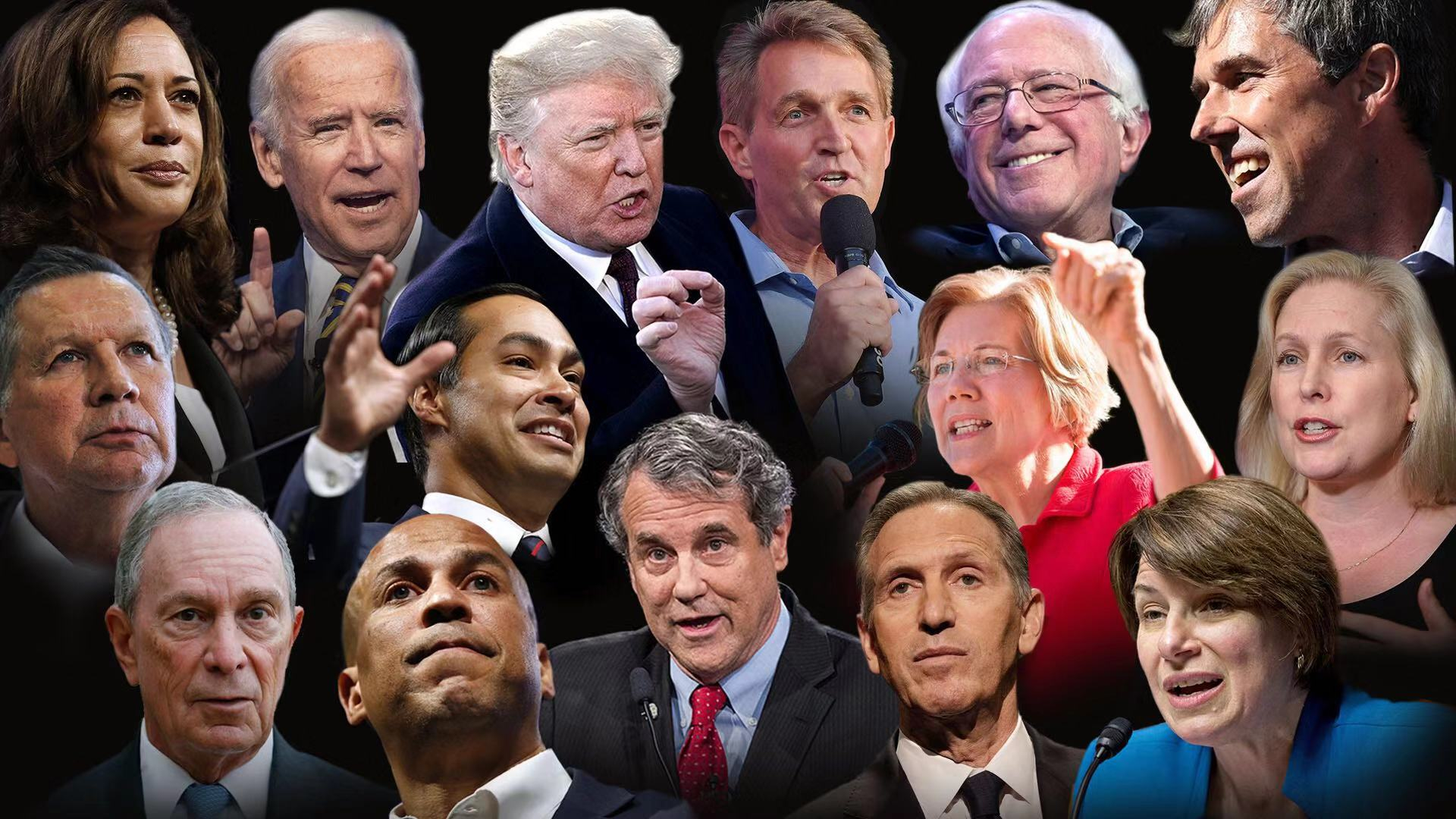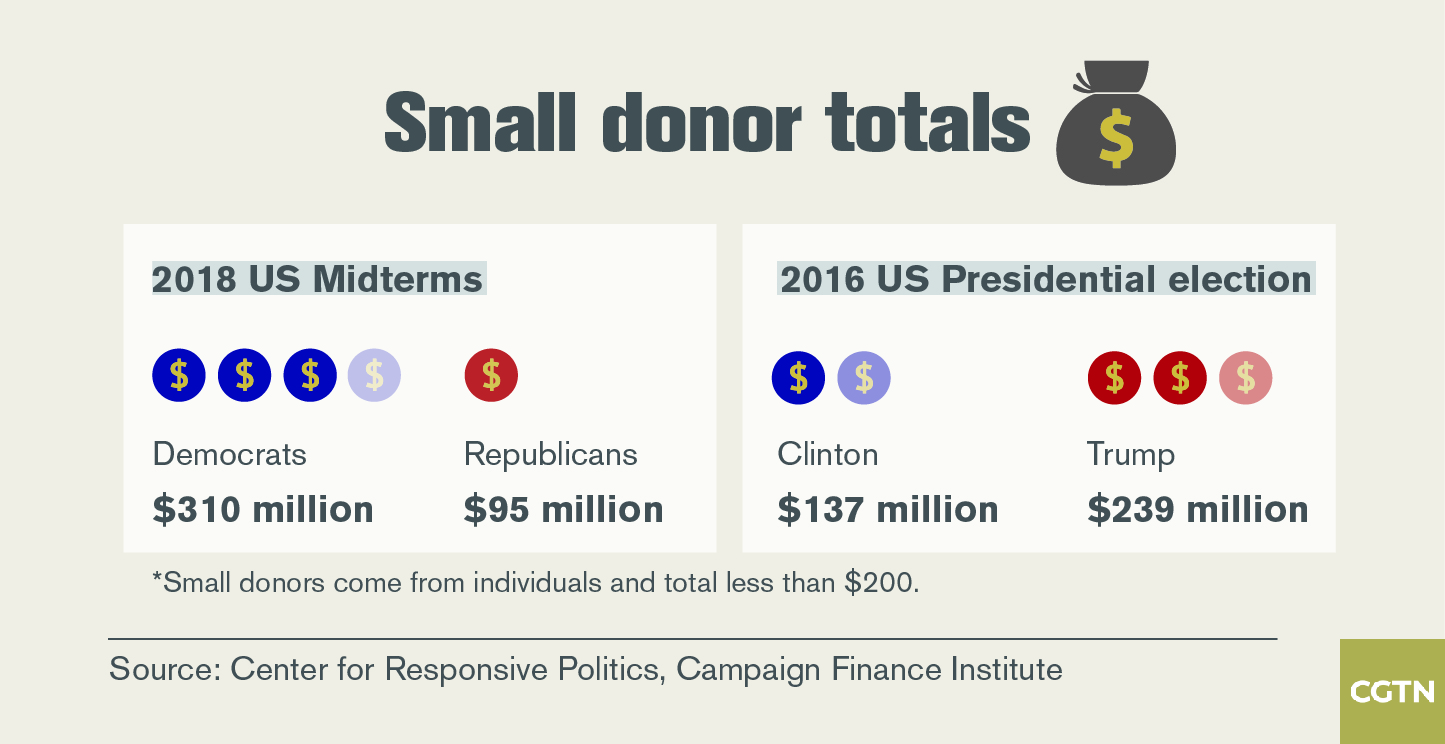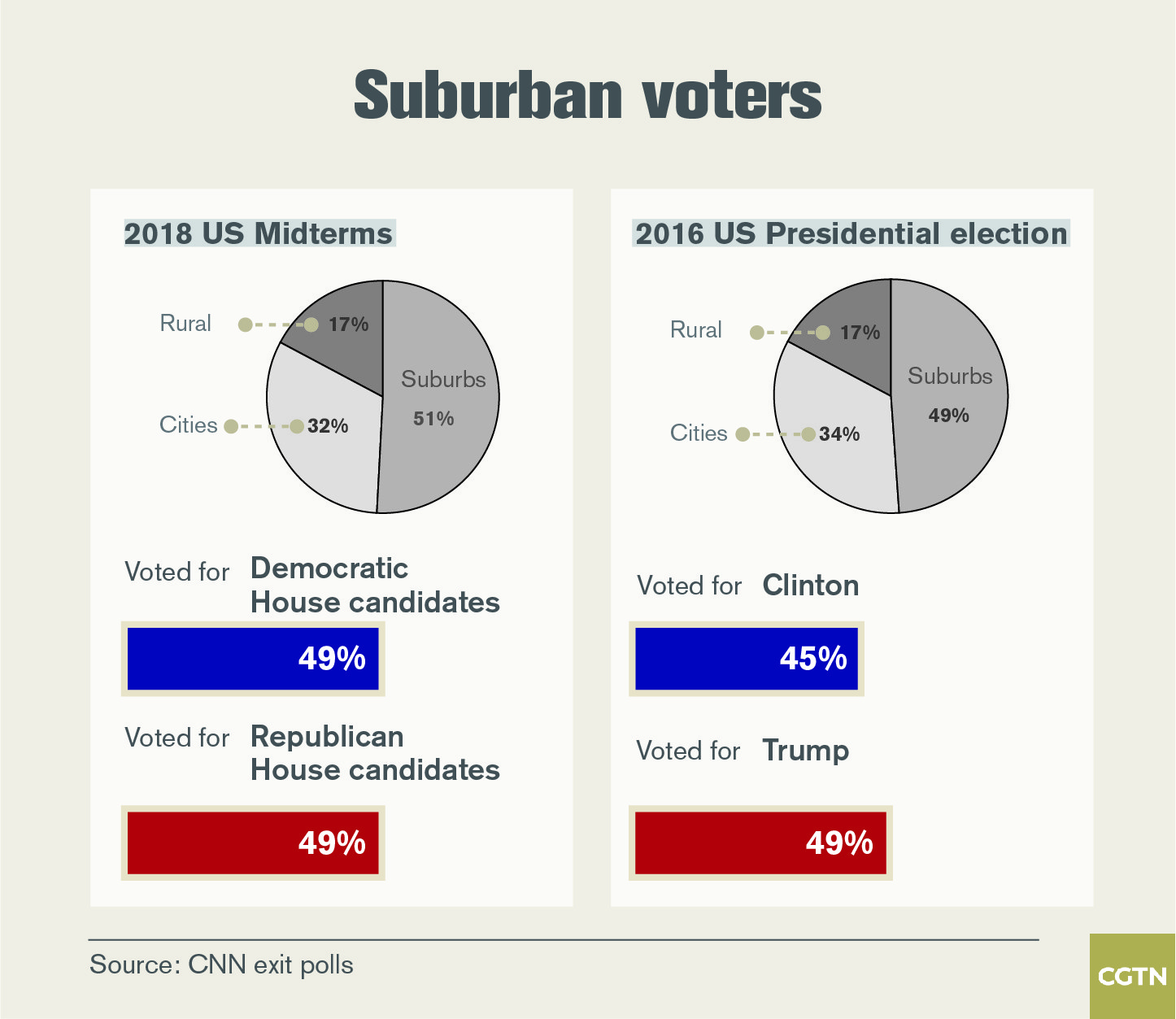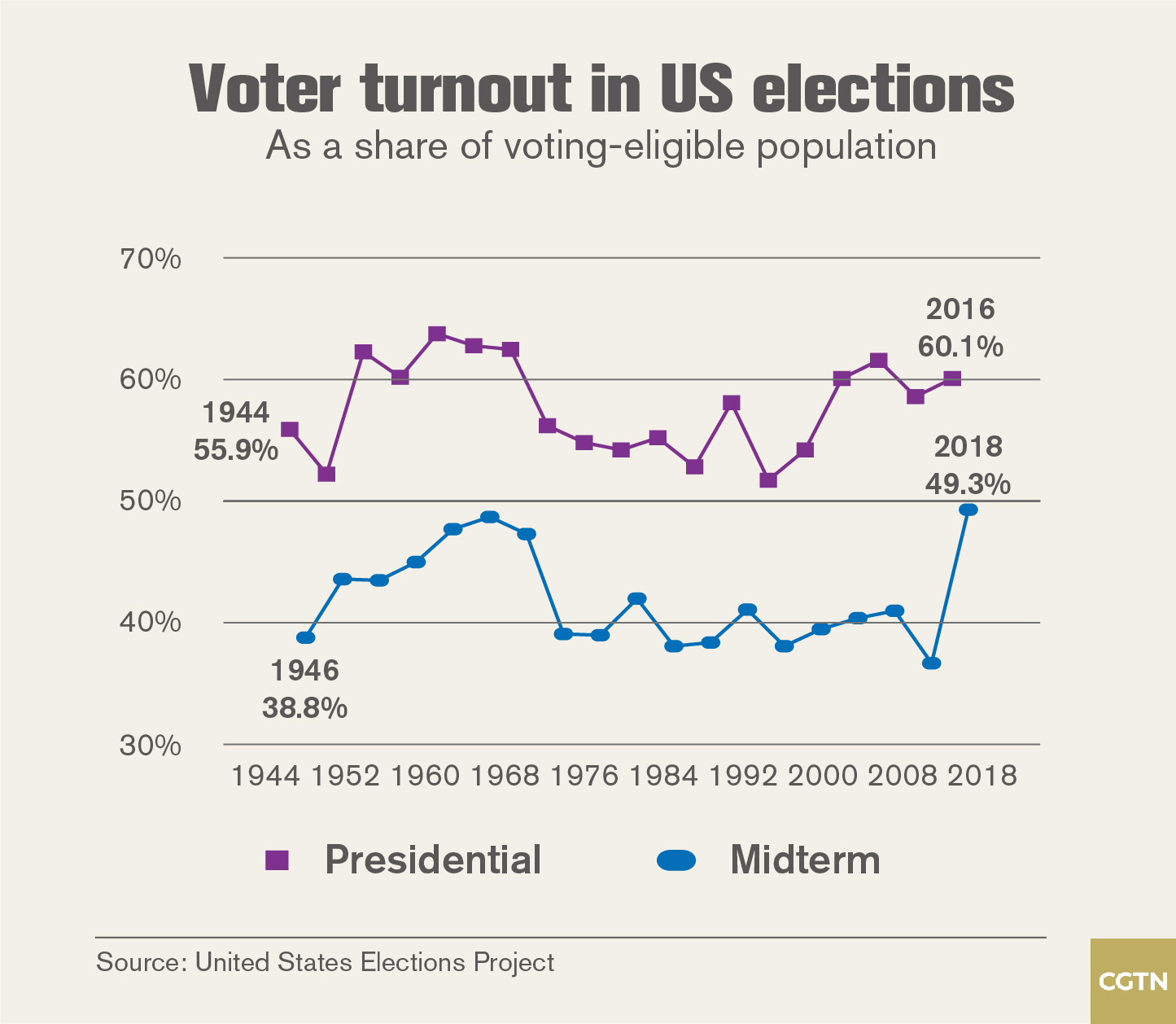
Politics
19:54, 23-Nov-2018
U.S. midterm lessons: What did 2020 candidates learn?
Updated
19:52, 26-Nov-2018
By John Goodrich and Zhao Hong

As one election cycle closes, another begins in the United States. The final 2018 midterm results are still trickling in, but campaigning is already underway for the 2020 presidential election.
The embodiment of the "permanent campaign," Donald Trump, intends to stand for a second term but may be challenged for the Republican nomination by a more traditional party figure.
On the Democratic side, in excess of 30 contenders – from former vice president Joe Biden and senator Kamala Harris to party darling Beto O'Rourke, Starbucks founder Howard Schultz and billionaire Michael Bloomberg – are thought to be contemplating a run.
And there's still time for a surprise third-party candidate to emerge, with moderate Republican John Kasich among those considering an independent bid.
Here are four key trends from the November 6 midterms that could guide the choices of potential candidates over the next two years.
Money
Nothing tips the scales in the American electoral system like money. Traditionally, the Republicans have held the advantage but in 2018 small donations helped Democrats comfortably outspend their opponents.
This is a sharp turnaround from the 2016 presidential election when Trump comfortably carried donations under 200 U.S. dollars. Campaign Finance Institute figures show that Trump took in 239 million U.S. dollars in small donations, over 100 million U.S. dollars more than Hillary Clinton.

Beto O'Rourke narrowly lost his bid to become Democratic senator for Texas in 2018, but drew in 38 million U.S. dollars from across the country in the third quarter alone. Overall the Democrats took in three times more than the Republicans in small donations.
The trend, an indicator of voter enthusiasm, could spell trouble for Trump, particularly as some big Republican donors – notably the Koch brothers – have been reluctant to back him.
O'Rourke's success has catapulted him to the top tier of Democratic presidential contenders – any Democrat who can come close in Texas and persuade people to part with so much money is in with a shout in the party's primaries.
Suburbs
Suburban America has been a happy hunting ground for Republicans, but in 2018 the Democrats picked off suburban districts on their way to winning the House of Representatives.
A USA Today analysis found more than 80 suburban counties and cities – with high incomes and a large number of college-educated voters – voted more "Democratic" than in 2016.
What's changed? The man in the White House. Trump's policies in office have alienated some in the suburbs while turning on a rural Republican base. The Democrats focused on healthcare in the midterms, and in the suburbs their message was effective.

Rural America – which has a markedly lower immigrant population share than suburban or urban – is now overwhelming Trump country, wealthy urban areas favor the Democrats and the 2018 elections suggest the suburbs are trending towards the Democrats.
It matters because Americans are increasingly likely to live in suburbs and small metropolitan areas, according to Pew Research, while the share of voters in rural areas is shrinking. Suburbanites made up more than half of voters in 2018.
Winning back the suburbs looks tough for Trump without a change of approach over the next two years. For Democrats, picking a candidate who can get those traditionally moderate voters to the ballot box could be decisive.
Female voters
The gender gap has widened during the Trump presidency, with female voters moving further from the Republicans. Fifty-four percent of women voted for Hillary Clinton in 2016, whereas 59 percent voted for Democrats in House races in 2018 according to exit polls.
The number of female representatives elected in 2018 reveals an even starker party gap. At least 102 women will serve in the new House of Representatives and 89 percent of the females elected are Democrats, up 44 percent. Republican women won just 13 seats, down from 23. Forty-three women from minority backgrounds were elected, and only one was Republican.

Female voters are trending towards the Democrats, and more and more women are being elected – with gains exclusively on the Democrat side. The trend was mirrored in Senate and gubernatorial elections.
A number of women have also been linked to 2020 runs, with Kamala Harris, Elizabeth Warren and Kirsten Gillibrand in the top tier of Democrats. For the Republicans, a change at the top of the ticket has been mooted. If Mike Pence were not on the ballot, outgoing ambassador to the UN Nikki Haley could be a replacement.
Young voters
Love or hate Trump, his policies and actions have driven more people to vote. Engagement in the process is up, and turnout in 2018 hit a post-WWII high at 49 percent.

The share of the youth vote was down on the presidential election of 2016, but those who did cast ballots moved decisively towards the Democrats.
Fifty-five percent of voters aged 18-29 supported Hillary Clinton in 2016, and 67 percent voted for Democrats in House races in 2018.
The U.S. is aging, however, with the share of the population aged over 65 increasing by about three percentage points over the past two decades according to Pew Research.

Trump is solidifying support among those who were the basis of his support in 2016, but risks losing the swing groups that pushed him over the line in the electoral college.
As with female voters, it is difficult to see how he can win under-30s back unless he changes course. For the Democrats, a candidate who inspires hope and positivity – such as O'Rourke or Harris – could further swing the balance of the youth demographic their way.
(Graphics by Li Wenyi and Fan Chenxiao)

SITEMAP
Copyright © 2018 CGTN. Beijing ICP prepared NO.16065310-3
Copyright © 2018 CGTN. Beijing ICP prepared NO.16065310-3